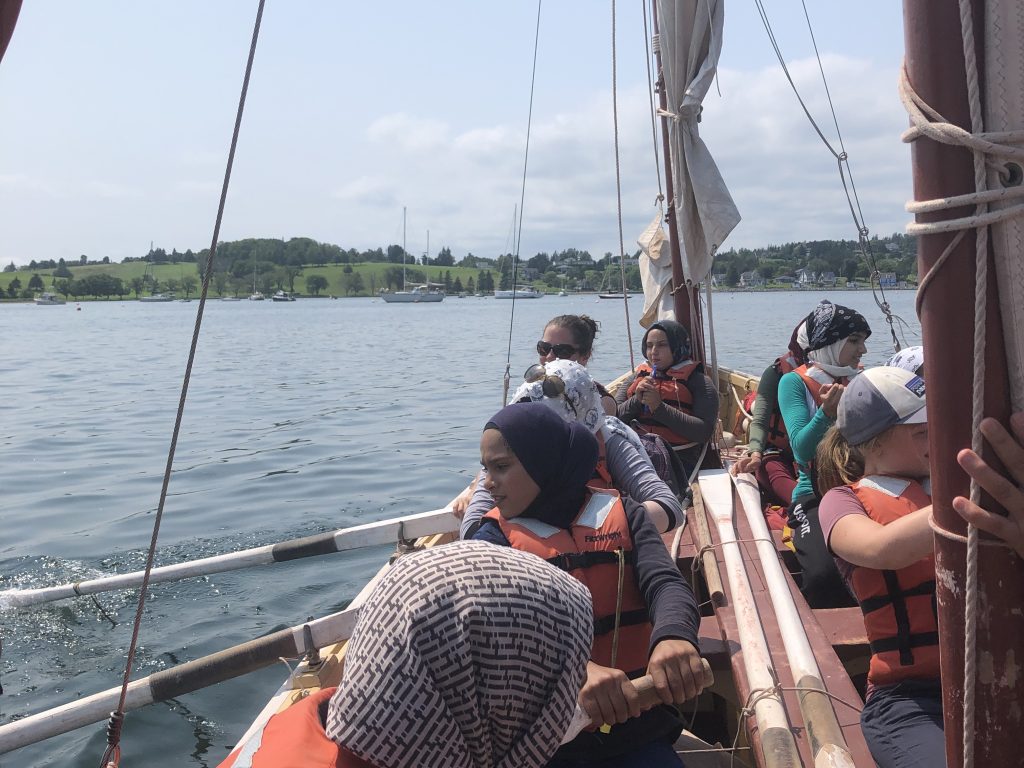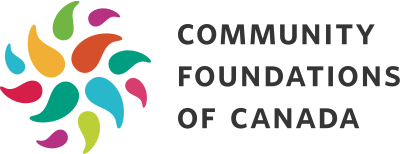This is part of our Healthy Communities Initiative series, showcasing how the $31 million investment from the Government of Canada is supporting communities as they create and adapt public spaces to respond to the new realities of COVID-19.
For 14 years, Heather Kelday has been the executive director of the Nova Scotia Sea School, offering youth adventure experiences, including coastal expeditions, camping, hikes, and more.
Through the school’s programs, youth learn invaluable personal skills, such as “how to work as a group through a really challenging experience, like being on the ocean,” Kelday says.
Clearly, Kelday is the last person that needs convincing of the benefits of outdoor recreation — but there’s one big problem. “[Outdoor recreation] is great for people who know how to do those things, and disproportionately not great for those who don’t have the skills, access or knowledge,” she says.
It’s an issue that Sea School has been tackling for over a decade: how can their organization better connect with underrepresented populations, to ensure all youth have equal access to life-changing outdoor skills?
Over the years, the school had one-off projects to engage Black, Indigenous and newcomer youth. “We were never able to really retain those kinds of programs partly due to us understanding what the groups needed, [and] partly due to funding,” Kelday says.

A new sense of urgency
And then, the pandemic hit. While Canadians started flocking outside — trail usage went up by 40 percent across the whole country — Kelday knew that not everybody could simply escape into nature. Despite COVID-related disruptions, the Sea School doubled-down on its diversity, equity and inclusion efforts, with support from a few of its donors.
Within a year, Sea School had partnered with three different agencies: Blxckhouse serving Black youth in the historic North Preston community, Ulnooweg serving Indigenous youth, and Immigrant Services Association of Nova Scotia (ISANS) serving newcomer youth. From this collaboration came the idea for the ‘Safe For Me Outdoors’ program, creating opportunities for Black, Indigenous and newcomer youth to build outdoor recreational skills. “[The program is] really born out of 15 years of trial and error,” Kelday says.
With years of experience under their belts, Kelday’s team applied to the Healthy Communities Initiative (HCI) grant, which focuses on creating safe, vibrant spaces during COVID-19 — or, in the case of Safe For Me Outdoors, breaking down barriers to ensure everyone can enjoy those spaces. The Sea School received $30,000 in funding: enough to kick off the program.
Through Safe For Me Outdoors, Sea School takes youth on four to five recreational sessions per season, each activity tailored to a youth group’s comfort level. While the school offers everything from boating to kayaking, Kelday says the project invites youth to begin by identifying the wilderness spaces local to their homes. Sometimes this means spending time in their backyards or at a local park.
“You don’t start on a seven-to-21 day expedition on a sail-boat, which is sort of the ultimate sea school experience,” Kelday jokes.
Sharing an example, Kelday says that some newcomer youth have low swimming skills, coming from countries where swimming may not be a recreational pastime. Instead, Safe For Me Outdoors might offer a hiking activity, or suggest taking a local bus to the park.
“By the end of the day, these kids are about chest deep in the water,” Kelday says. “They are just so happy to be there.”
Before long, the newcomer youth group was able to meet the Sea School at Lunenburg — an hour and half drive from their homes — to come sailing, followed by sea kayaking. “That was the trajectory that we built: start with half day, then full day things in the city, and then field trips,” Kelday says.
A Joint Effort
Safe For Me Outdoors supports the Sea School’s three partner agencies, helping their partners give youth easy access to recreational activities. “There are so many things that are barriers to even going to a local park,” Kelday says. “We knew those partner groups had lack of access, or funding or transportation.”
There’s a domino effect in play: the success of the school’s partnerships builds trust with the youth’s families, in turn increasing the youth’s participation in programs.

Any sustainable long-term partnership requires work, time and training. “Internal knowledge-building, culture shifting, resource development, piloting,” Kelday counts — all things that require funding, which is where the HCI grant comes in again.
“It was just perfect timing,” Kelday recalls about the grant. “We have identified these groups that are really excited about our programming, and here we have the funding to get this going.”
Already, the program is having a huge impact on youth, Kelday says, giving them the space to reconnect — not to mention the multitude of skills and knowledge being built.
“One of our goals is [that] you’re going to realize you could do things that you didn’t know you could do,” Kelday says. “Stepping out of your comfort zone, feeling safe and [knowing] that you can trust those leading you, and trust yourself.”
She adds that, for some of the youth, “there’s so much history of trauma and fear. To see that eagerness and readiness is probably the biggest thing for us.”

Blue Skies Ahead
Looking ahead, the school plans to offer certification to the youth, creating leadership opportunities like becoming a Sea School instructor or a hiking guide. By doing so, “it’s not just the Sea School that’s imposing outdoor recreation on the community; they start to build their own knowledge and leaders,” Kelday says.
Through Safe For Me Outdoors, Sea School is committed to ensuring everyone can escape into nature, tapping into all its many benefits for health and wellbeing. “Every community is surrounded by nature,” Kelday says. “If we impact 20 youth, that impacts their families, the surroundings of their communities — it’s just gonna trickle in.”




